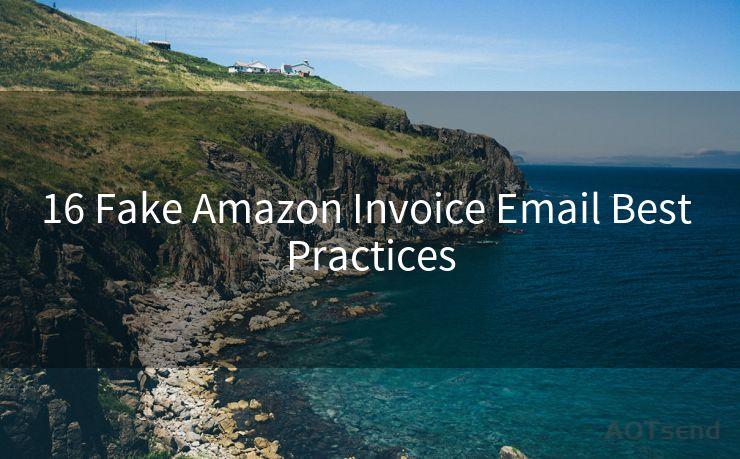16 Fake Amazon Invoice Email Best Practices




In the digital age, scams are becoming increasingly common, and fake Amazon invoice emails are among the most prevalent. These emails often look legitimate, making it easy for unsuspecting recipients to fall victim. To help you navigate this minefield, here are 16 best practices to identify and avoid these scams.
1. Verify the Sender's Email Address
Always check the email address of the sender. Amazon's official emails usually come from well-defined and recognizable domains like @amazon.com. Be wary of any email from a similar but slightly altered domain.
2. Examine the Email Design and Language
Fake emails often have poor grammar, spelling errors, or a design that doesn't match Amazon's official branding. Pay attention to these details and compare them with known Amazon emails.
3. Don't Click Suspicious Links
Never click on links in an email that you suspect might be fake. These links can lead to malicious websites that steal your personal information or infect your device with malware.
4. Hover Over Links
Before clicking any link, hover over it with your mouse to check the URL it leads to. This can help you identify suspicious or unfamiliar domains.
5. Check for HTTPS
If you do visit a link, ensure that the website uses HTTPS. This indicates that the site is secure and encrypts your data.
6. Ignore Urgent Requests
Scammers often use urgent language to pressure you into action. Amazon will never ask you to urgently update your account information or make a payment via email.
7. Contact Amazon Directly
If you're unsure about an email, log into your Amazon account separately (not through the email link) and check for any notifications or messages there.
8. Don't Download Unknown Attachments
🔔🔔🔔
【AOTsend Email API】:AOTsend is a Managed Email Service for sending transactional emails. Support Email Types: reminders, authentication, confirmations, notifications, verification codes, invoices, password resets, account activations, billing statements, two-factor authentication (2FA), and one-time passwords (OTP) emails, etc. $0.28 per 1000 Emails. 99% Delivery, 98% Inbox Rate.
You might be interested in:
Why did we start the AOTsend project, Brand Story?
What is a Managed Email API, How it Works?
Best 25+ Email Marketing Platforms (Authority,Keywords&Traffic Comparison)
Best 24+ Email Marketing Service (Price, Pros&Cons Comparison)
Email APIs vs SMTP: How they Works, Any Difference?
Attachments in fake emails can contain viruses. Never open or download attachments from suspicious emails.
9. Use Two-Factor Authentication
Enabling two-factor authentication for your Amazon account adds an extra layer of security, making it harder for scammers to access your account.
10. Report Suspicious Emails

If you receive a suspicious email, report it to Amazon and your email provider. This helps them identify and block similar scams in the future.
11. Keep Your Software Updated
Regularly updating your operating system, browser, and antivirus software can help protect your device from malware and other security threats.
12. Educate Yourself
Stay informed about the latest scams and how to avoid them. Amazon and other reputable sources regularly publish information about current scams.
13. Use Strong Passwords
Create complex and unique passwords for your Amazon account and other online accounts. Avoid using easily guessable information like your name or birthdate.
14. Monitor Your Accounts
Regularly check your Amazon account and credit card statements for any unauthorized activity.
15. Be Cautious of Unsolicited Offers
Be wary of unsolicited emails offering deals or promotions. These are often scams designed to steal your information.
16. Seek Help
If you're ever unsure or concerned about an email, don't hesitate to reach out to Amazon's customer service or a trusted IT professional for advice.
By following these 16 best practices, you can protect yourself from fake Amazon invoice email scams and ensure a safer online shopping experience. Remember, vigilance and caution are your best defenses against these increasingly common cyber threats.




Scan the QR code to access on your mobile device.
Copyright notice: This article is published by AotSend. Reproduction requires attribution.
Article Link:https://www.mailwot.com/p6750.html



